The long walk along Battle Road, past the Captain William Smith House,
to reach the morning's battle site.
to reach the morning's battle site.
Saturday morning dawned wet, dark, dreary, and cold, which meant three petticoats, mitts, and long cloaks all around! We arrived at Minute Man National Park just after 7:30am in time for registration and to get accustomed to the lay of the land before the troops would be called to assemble for the first public event of the weekend.
"Local" militia assembling.
We ladies spent our time before public hours chatting and meeting new friends from other groups, all the while desperately trying to keep our damp feet warm (there are only so many layers of stockings you can fit in period footwear!). Hartwell Tavern was a-buzz with the ladies of The Hive setting up their sewing, quilting, spinning, and cooking demonstrations for the day, and we found some brief warm respite inside before heading out to find a spot to watch our men-at-arms in action at the first tactical demonstration of the day.
Hartwell Tavern, quiet in the early morning before being inundated with hundreds of visitors.
B warming up near the hearth in Hartwell Tavern.
Militiamen congregating in the yard of the tavern.
The weekend officially opened on Battle Road itself, where the "local" militia clashed with British Regulars between Hartwell Tavern and the "Bloody Angle," on the very same ground where gunshots first rang out 238 years ago.
...hiding amongst the trees in preparation for a confrontation
with the approaching Crown forces.
Although I've seen countless battle reenactments and tactical demonstrations over the years, I have to admit that there was something eerie about this particular experience. Knowing it took place on that very same ground, almost to the day, and then seeing and hearing the seemingly endless stream of redcoats marching up the road towards us, horses' hooves quite literally thundering, the solidarity of the troops' numbers and even their physical statures overwhelming and threatening - it was all prodigiously impressive and yes, even scary. It was so easy - much easier than it usually is - to imagine how our colonial ancestors must have felt, bravely staring into those faces, ready to fight for what they believed in.

Militia men assembling for a final parade at the end of the battle,
with cheers and applause from the spectators watching.
After enjoying lunch out with another unit, we all headed into Lexington for Tower Park, the second battle demonstration of the day. The crowds lining the closed-off streets of the town were multiple people deep, everyone peeping over the heads of those in front of them, and children perched atop the long stone wall enclosing the battle site to try to get the best view possible. With some time to spare before the demonstration began, and our gents engaged in pre-battle drilling and preparations, we ladies headed up the street a bit to explore Munroe Tavern.
Munroe Tavern in Lexington, occupied once again by Crown forces.
Munroe Tavern, built in 1735, was overtaken by British forces on April 19th, 1775, and occupied as a field hospital and the headquarters of Brigadier General Earl Percy for a couple of hours on that fateful day. From 1770 to 1827, William Munroe served as the tavern's owner and proprietor; on April 19th, he responded to the call to arms, serving with Captain John Parker as orderly sergeant. When his wife, Anna, heard the gunfire and saw the British troops approaching her home, she took her children and fled into the woods behind the house. When she returned home, she found her front dining room strewn with bloody bandages and the remains of hastily eaten meals.
While the house is largely interpreted as it looked under Percy's occupation, with the goal of recounting the British experience during the Battles of Lexington and Concord, it also saw another significant piece of history that is commemorated in an upstairs chamber. George Washington toured the Lexington battle sites in 1789 and stopped to dine at Munroe Tavern. The chair in which he sat, the table at which he dined, the set of dishes and cutlery he used, and even the metal bar to which he tied his horse, were all preserved by the Munroe family and passed down through the generations. Munroe family descendants owned the property and its family heirlooms until the middle part of the twentieth century, when they gifted it all to the town. In 2010, a major restoration restored the tavern to its 1775 appearance, and it now stands as a unique representation of "the other side" of Lexington's dramatic Revolutionary War story.
For dinner that evening, we all gathered together to enjoy each other's company and some tasty traditional New England fare in true 18th-century style at Concord's famed historic Colonial Inn. Our evening ended with plans for about half of us to meet up in the morning to explore some of the many local historical sites and museums. A full account of those adventures will be offered in the next post, so stay tuned for more!
And since no reenactment event is complete without an account of its wardrobe...! I had finished a new gown of pink worsted in the hotel on Friday night, and wore it Saturday paired with a new kerchief. Unfortunately, the incredibly damp and chilly weather meant that my new outfit stayed well-concealed inside the warmth of my cloak the entire day long, so I only have one picture - with cloak shed momentarily just for this purpose! - to show for it! So consider this a teaser, and the next time I wear this gown, I'll be sure to give it the proper Threaded Bliss treatment with additional photos and details!
A sneak peak at my new pink worsted gown!
While you await the tale of our Sunday museum-hopping in the next post, a prodigious amount of additional photos from Saturday morning's Battle Road event can be found on our flickr photostream.

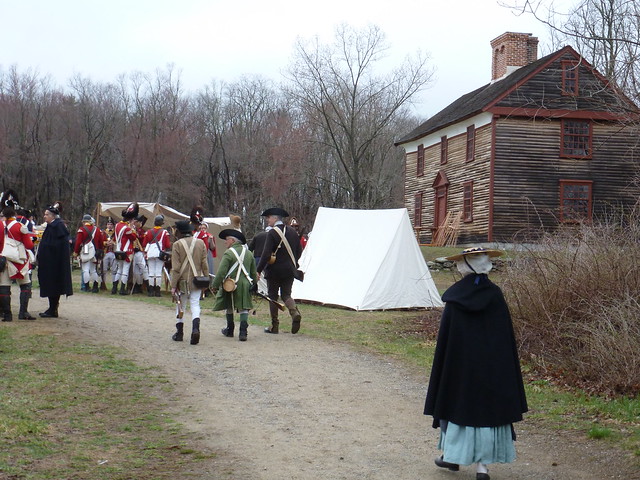
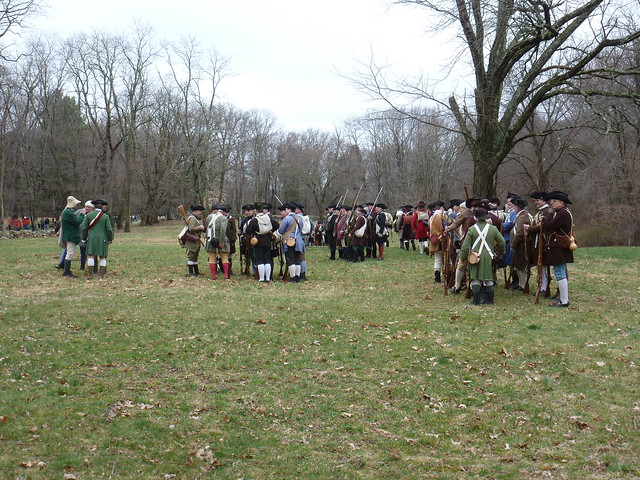

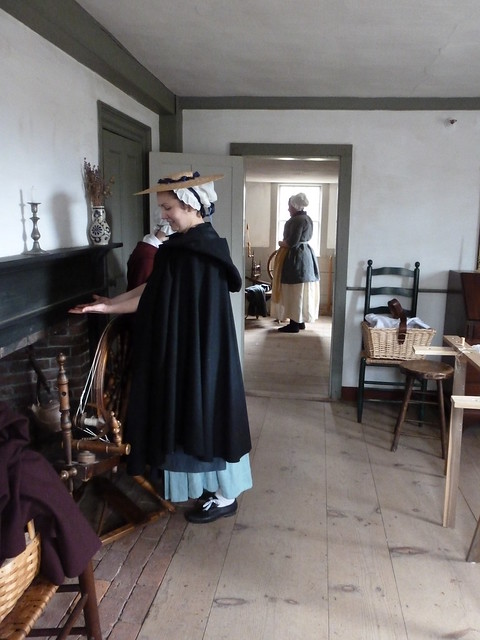
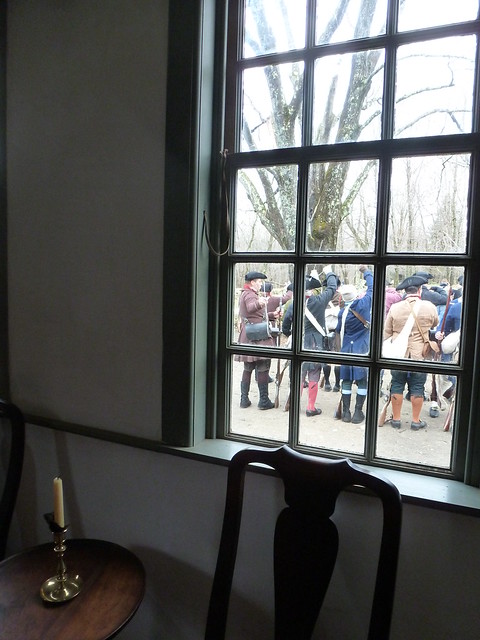
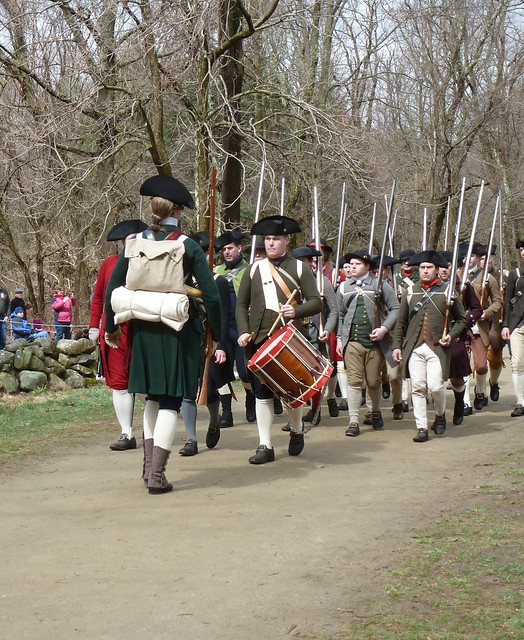
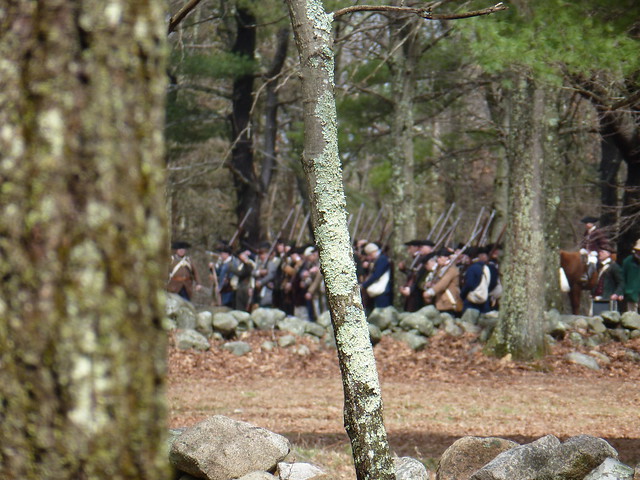
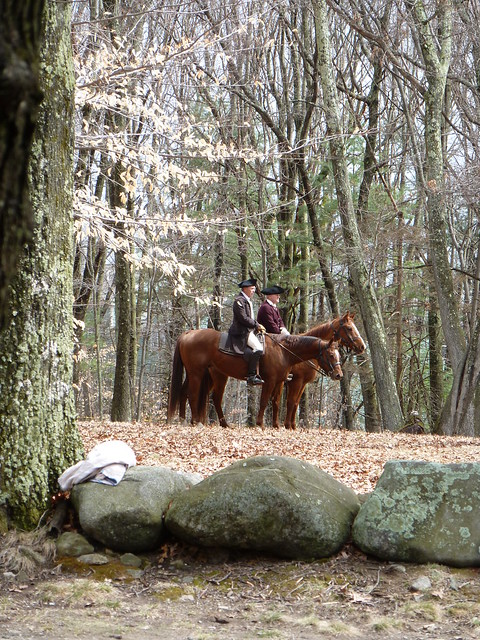
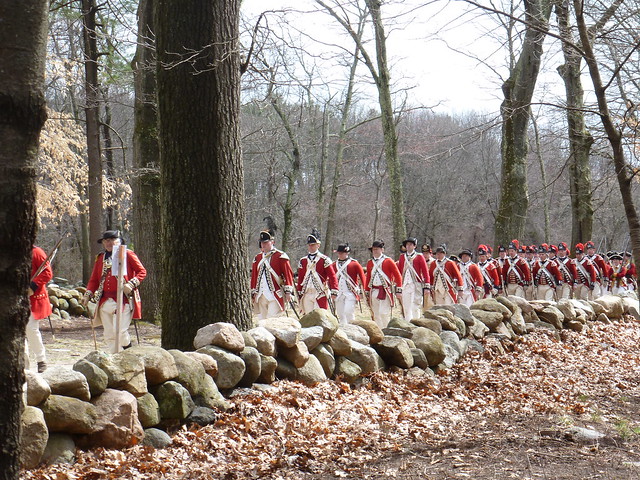
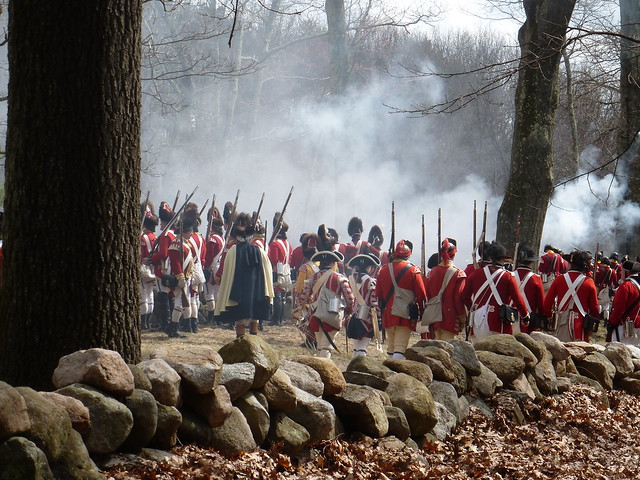
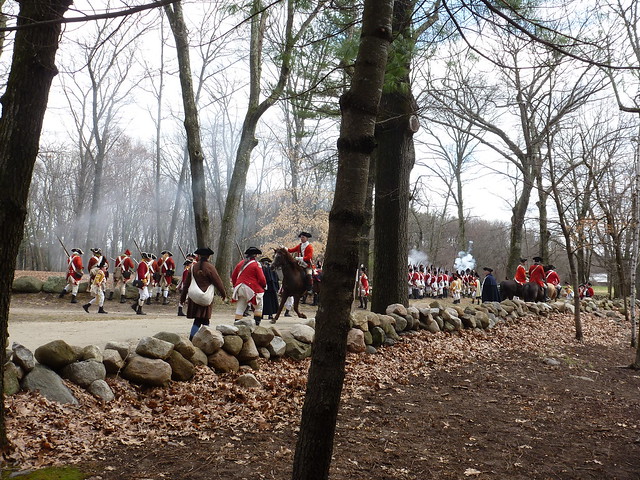
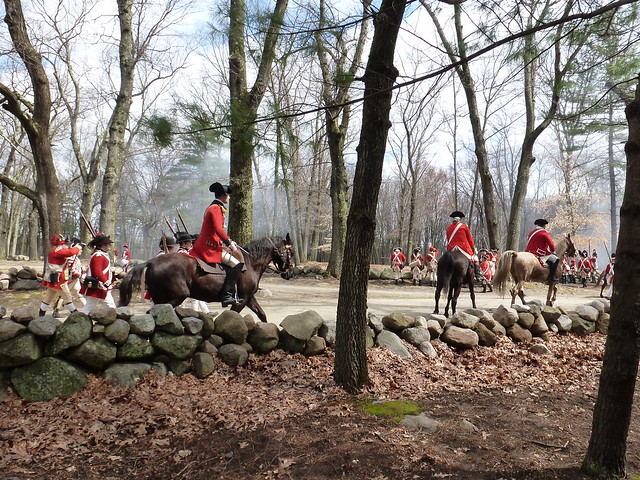
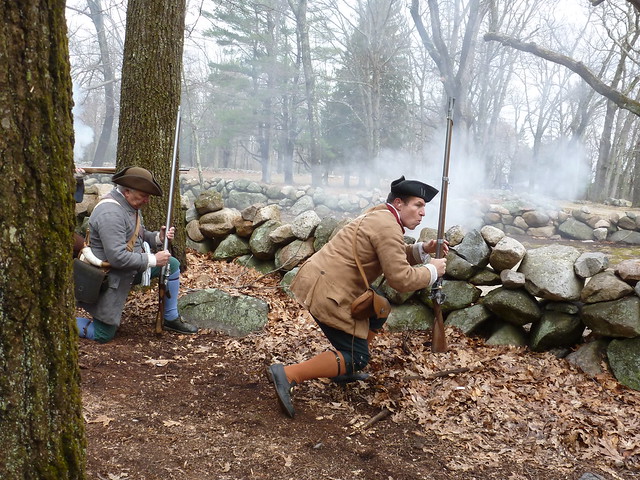
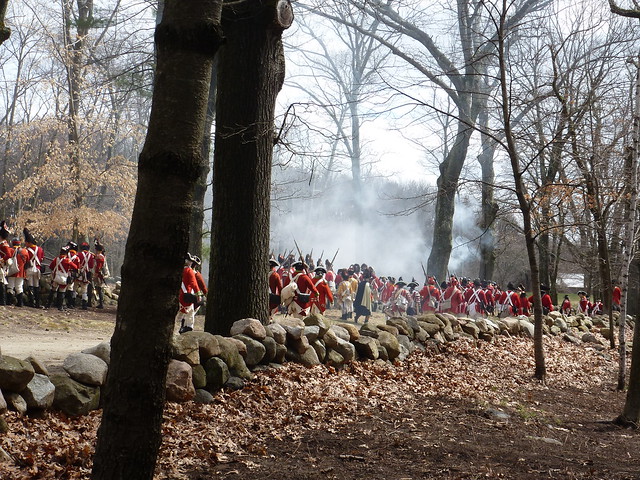


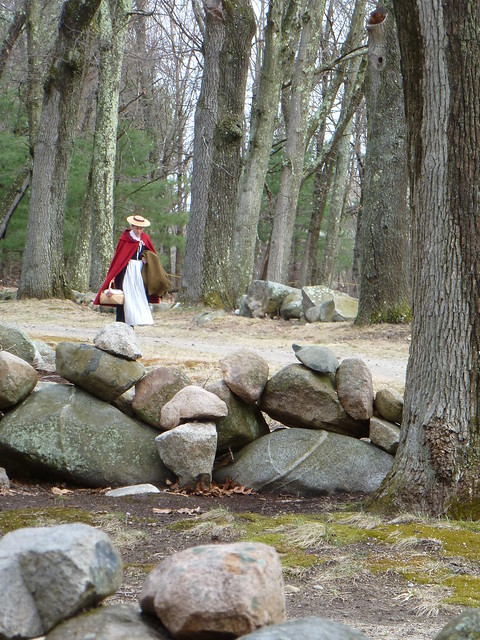

1 comment:
How awesome! You are right there, in the middle of some wonderful history! How lucky you are! Looks like a wonderful wonderful weekend! I love the pictures.
Post a Comment